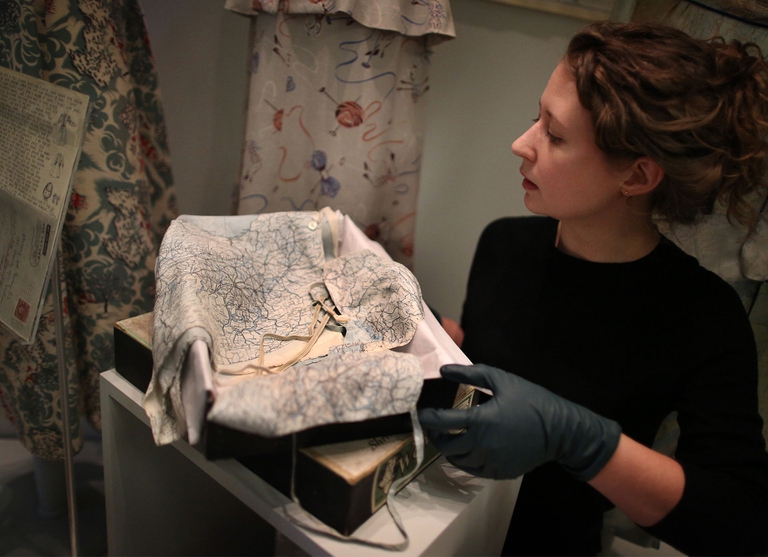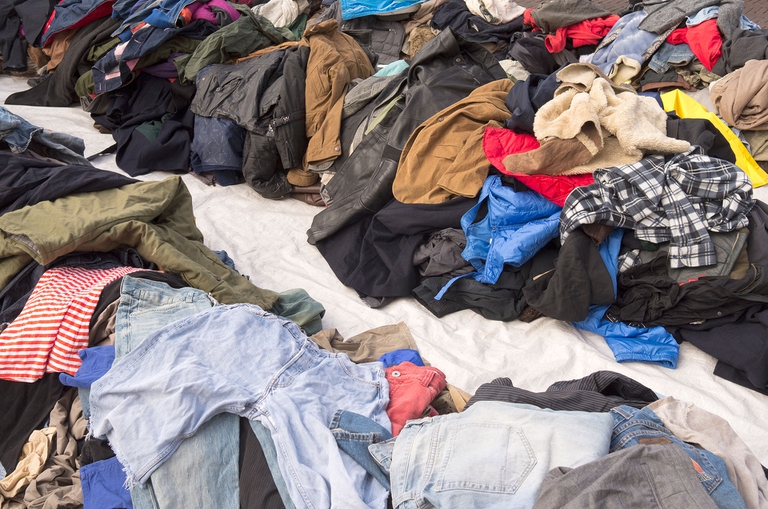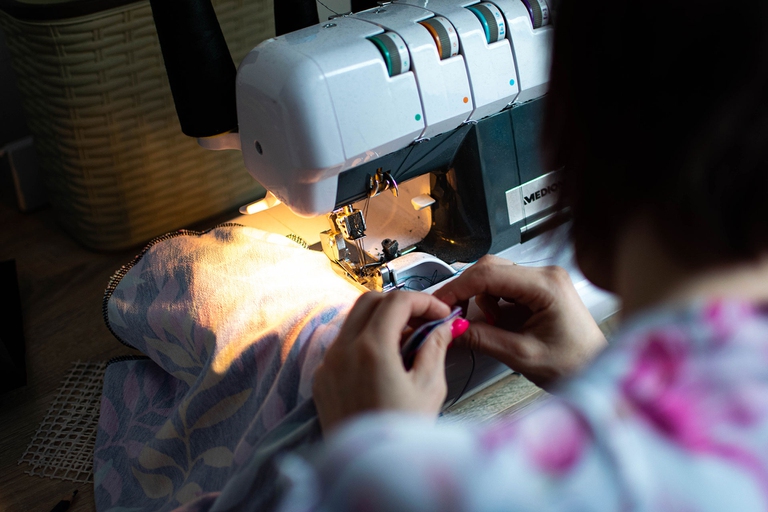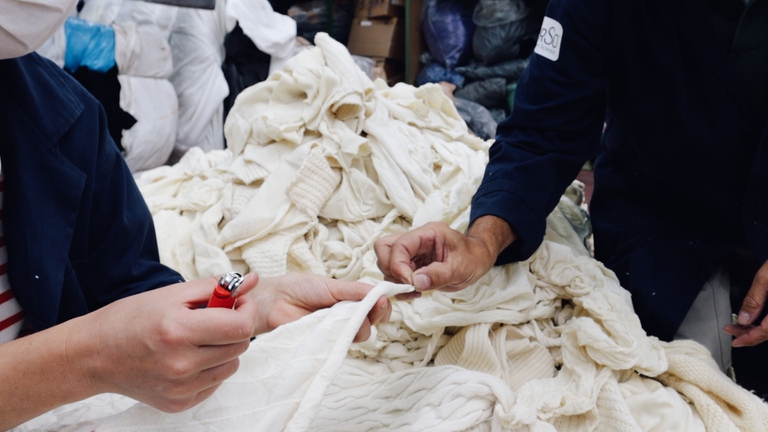https://www.lifegate.it/upcycling-recycling-moda-sostenibile
- |
- Both upcycling and recycling deal with the second life of products, but have an opposite production approach.
- In upcycling, which consists of giving a new life to an object without it undergoing further processing, creativity is fundamental, which allows you to increase the value of the original product by transforming it into something else.
- In recycling, where the components of an object require a conversion process to be reused, the role of scientific research is fundamental which, in some cases, allows this process to be repeated indefinitely.
When it comes to sustainability, the world of fashion it often tends to inundate consumers with terms that recall that universe, but it does not always do so in a timely manner. Upcycling And recycling they are frequently used as synonyms but, although they both have to do with the second life of products, they are not the same thing.Indeed, it can be said that the concept behind the two actions is precisely the opposite.In any case, wondering about the meaning of words related to the world of sustainability implies reflecting deeply on them production processes and on materials which are the basis of what we choose to buy.

Upcycling
When we talk about upcycling we are referring to the fact that a garment, which has ended its life as such, can be reconverted into something else without this involving a further processing process of the materials that compose it.It's a reuse and conversion process that aims to increase value of that object.
Let's take a practical example.If I use a pair of old jeans to make a skirt, cutting some scraps of fabric and reassembling them in a different way, that's upcycling.Through what is in effect a reuse action, a new product is created by creatively reusing, in whole or in part, an object as it is.The product you get from this transformation, which we will define as "simple", can be functionally similar, but also very different from what it originally was.

The role of creativity
To trace the first time the term upcycling was used – or rather, it would be worth saying invented – we need to take a step back to 1994, when Reiner Pilz, mechanical engineer at the German automation technology company Pilz Gmbh & Co., explained in an article for an architecture magazine how he managed to sustain a very large production despite having a limited supply of original material.“Why do I have to buy recycled wood blocks from an English supplier, when just down the road a load of similar blocks is ready for demolition?Is this the future of Europe?I call it recycling down-cycling.What we need is theup-cycling, thanks to which old products are given greater, not less, value."
The purpose of theupcycling is it therefore purely artistic?No, or at least not only, but creativity in design certainly plays a crucial role in practices of this type.Products that already exist, but that some no longer need, offer endless possibilities, if only you have a little vision.Investing in practices, or brands, that seriously practice upcycling not only decreases the amount of waste that is produced, but significantly slows down the continuous demand for products which, in addition to resulting in the use of resources and the production of emissions, often implies unethical working conditions.

Recycling
Recycling means dismantling and sorting the components of an object in order to use it reuse the material.A recyclable material is repurposed, altered, melted and broken down:wanting to give a practical example, to recycle a used glass bottle we must first melt it, and then make something else with the melted glass.Unlike what happens with upcycling, the demolition of materials in a recycling system not only does it still produce emissions, but moreover it normalizes the behavior of the consumer society in which objects are considered disposable, especially in sectors such as fast fashion.Not to mention the fact that a recycled material very rarely maintains the same qualities and characteristics of the original one intact.
Having said that, recycling is absolutely not a bad thing, on the contrary:it is vitally important that we invest in research and development in this field, and that companies increasingly focus on using regenerated fibres or to invest in the creation of products that are entirely recyclable.According to data released in 2018 by the U.S.EPA (United States Environmental Protection Agency), in fact, around the world are produced one hundred billion heads every year, which generate a volume equal to 17 million tonnes of solid urban textile waste, approximately 5.8 percent of total waste.Natural fibers can take a few weeks to decompose, but even years, in the meantime they release methane and CO2 in the atmosphere.Not only that:the synthetic fabrics they are not designed to decompose and the risk is that they release toxic substances into the aquifers and soil surrounding the landfills.

The role of research
The fibers of which the clothes are made are mainly synthetic or biodegradable materials (natural fibres):the composition clearly influences the process and recycling possibilities.What is very impactful is that a garment is rarely made entirely of the same fiber or the same material:therefore an initial intervention is necessary separation of the various components and, finally, each fiber must be handled correctly (based on texture and coloration for example) and spun again.While a process of upcycling is potentially infinite, that of recycling unfortunately not fibers:every time a fiber is regenerated it shortens, making the possibilities for regeneration finite.
Wool and cashmere they are the longest-lasting materials, they can in fact be regenerated up to four times, while the cotton it stops at two.In this sense, research has a crucial role because, unlike natural fibres, synthetic fibers have a much more long-range regeneration potential.The nylon regenerated Econyl, which the German company Aquafil has been producing since 2011, is made entirely of ocean and landfill waste, such as industrial plastic or fabric scraps, and is designed to be recyclable countless times.This is possible thanks to a purification process of nylon waste, which can thus return to its initial qualities.

Avoid greenwashing
In summary, the great advantage of upcycling Compared to recycling, its lower environmental impact is:converting an object into raw material, a fundamental part of the recycling process, requires a considerable amount of energy and is a process that can only be repeated several times in a few cases.The first step in learning to defend ourselves from aggressive brand communication and practices greenwashing is to be aware of the processes and the terminology associated with them.More and more brands are making use of recycled fibres, in which case it is useful to distinguish what type of material we are talking about, how it was regenerated and whether it will be possible to regenerate it again in the future.
Upcycling is an integral part of the DNA of many emerging brands, but even luxury giants or very long-standing brands are gearing up to create capsule collections in this sense.The moment the garments are assembled starting from something that was already there and has not been modified, then we know that what we are buying is a virtuous garment from the point of view of waste and emissions.
